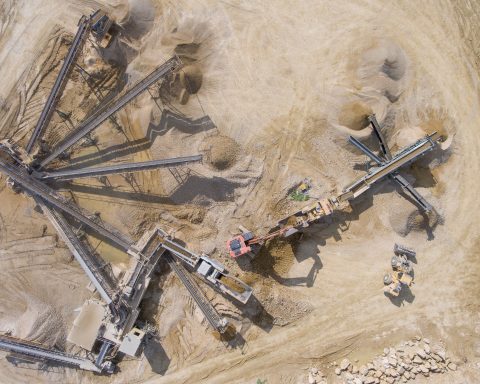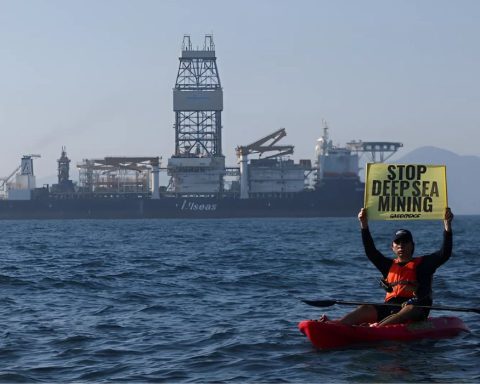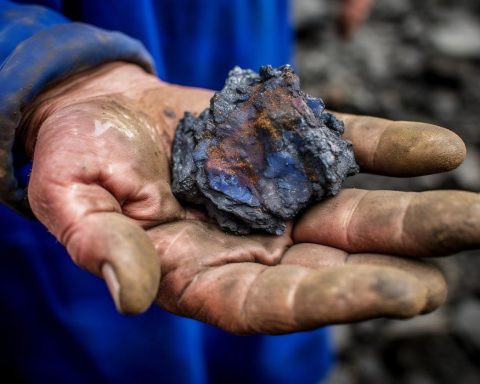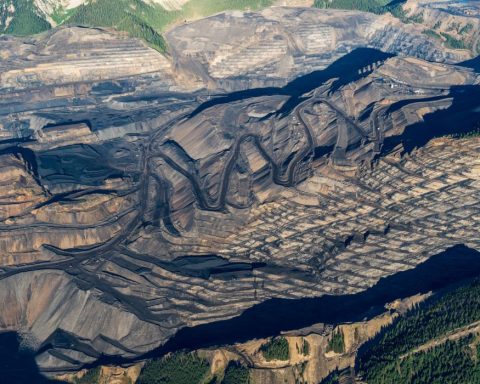In 1956, the British government passed the Clean Air Act after thousands of people died four years earlier from airborne particulate matter, created when coal was burned to heat homes and fuel power stations.
Coal never really cleaned up its act, however. The mineral, used for generating electricity (thermal) or making steel (metallurgical), remains one of the planet’s worst polluters; together, the burning of fossil fuels like oil and coal are driving climate change and killed an estimated 8.7 million people in 2018, according to Environmental Research.
Yet coal continues to hold energy-addicted nations in its thrall, with China producing 3.7 billion tonnes in 2019, the U.S. 640 million tonnes and Canada 57 million tonnes annually. But despite being an environmental pariah, coal may yet yield a silver lining that could help pave the way to the net-zero carbon-emissions future.
Coal combustion creates a variety of solid waste by-products, such as fly ash, which contain low amounts of rare-earth elements, a group of 17 elements bearing exotic names like dysprosium, neodymium, europium, terbium and thulium. These metals, with their high electrical conductivity and heat resistance, are crucial to the world’s transition from fossil fuel to advanced replacement green technologies. Electric vehicles and wind turbines, for example, use permanent magnets containing the element neodymium, currently the most important end use for rare earths.
For economically depressed coal regions, tapping America’s three billion tonnes of waste coal for rare earth could potentially usher them into the new green economy. Last year, U.S. President Joe Biden issued an executive order to secure crucial supply chains for manufactured goods, including high-tech devices requiring rare earth, such as cellphones, electric vehicles and batteries that store wind- and solar-generated energy. Canada and the U.S. have signed a Joint Action Plan for Critical Minerals to support clean energy deployment.
Spurring the race for new sources of rare earth is the need to strengthen supply chains, with Adamas Intelligence’s Rare Earth Magnet Market Outlook to 2030 forecasting severe shortages in eight years. Currently, China produces about 90% of the world’s rare earth and permanent magnets, leaving the West vulnerable to sanctions and the disruption of clean-energy technology development.
The “rare earth” moniker may imply scarcity, but these elements are easily found in the earth’s mantle. However, they aren’t concentrated in the earth the way other minerals are and have a large mining footprint. They’re also expensive to extract and purify because of the energy required and historically have generated enormous amounts of solid waste and air and water pollution.

The possibility of recycling coal for rare earth also raises concerns, says Lisa Evans, the Boston-based senior counsel for Earthjustice and a specialist in hazardous waste law. “How do you extract [rare earth] in a way that doesn’t create more of an environmental hazard, that doesn’t endanger workers and that doesn’t leave toxic waste for the community? All these questions have to be answered,” Evans says.
Pursuing such answers is mineral-processing engineer and assistant professor Maria Holuszko, co-founder of the Urban Mining Innovation Centre at the University of British Columbia. Holuszko is one of the few researchers in Canada working to identify rare-earth sources in existing coal waste in tailings ponds and on mine sites. She is also developing extraction methods.
Rare-earth recovery from coal waste is complex and includes the use of acids. “We try to minimize the impact on the environment, but generally these processes are energy intensive, using solvent extraction technologies that are not environmentally friendly,” says Holuszko.
In the U.S., the University of Kentucky, supported by the federal National Energy Technology Laboratory, is surging ahead with a similar pilot project to extract rare earth from coal waste. Last year, the university reported that pilot-scale testing of coal and its by-products netted rare-earth oxide concentrates up to 98% pure. Similar pilot projects are being federally funded by the U.S. Department of Energy in Wyoming, West Virginia, Tennessee, North Dakota and other states in the hopes that out-of-work coal workers may eventually find “good-paying jobs” in the clean economy, as one senator put it.
Potential upcycled rare-earth sources may also exist at other mineral mining sites, says Charles Dumaresq, vice-president of science and environmental management at the Mining Association of Canada (MAC). These include places where uranium and bauxite, used to produce alumina, have been mined. Even oil-waste tailings ponds in Fort McMurray may hold rare earth, says Dumaresq.
Brendan Marshall, MAC’s vice-president of economic and northern affairs, says economic factors further impede a rare-earth gold rush from waste materials like coal. There is no existing market for rare earth in Canada, nor is there a pre-existing North American supply chain for extraction or separation or a manufacturing base for products like permanent magnets. “Resolving those key challenges is the biggest factor around Canada’s success in bringing mineral extraction of these products online,” Marshall says.
The growing global urgency for rare earth may make it more efficient to source these metals from deposits in the earth, rather than relying upon mineral waste recycling, and two facilities — one American, one Canadian — are looking to capitalize on virgin deposits.
Canada has 7% of the globe’s resources of rare earth and is 10th in the world in reserves. China is first and the U.S. is eighth in the world in reserves.
To some, this signals opportunity. In 2020, the Saskatchewan Research Council (SRC) announced the creation of the Rare Earth Processing Facility in Saskatoon, sparking enquiries from around the world. The new plant will separate rare earth from virgin ore mined from northern regions of the province and create value-added midstream processing concentrating these metals, says SRC CEO Mike Crabtree.
Phase 1, opening in 2023, is a hydrometallurgy plant that extracts rare earth from ore. The Phase 2 plant, which will be finished in 2024, will use the solvent extraction process to produce separated rare-earth oxides. Compared to China’s notoriously polluting extraction methods, which have spewed thousands of millions of litres of contaminated water into the environment, Crabtree says his Canadian facility will be one of the first of its kind to recycle all its water.
How do you extract [rare earth] in a way that doesn’t create more of an environmental hazard, that doesn’t endanger workers and that doesn’t leave toxic waste for the community?
Lisa Evans, senior counsel for Earthjustice
One potential rare-earth source is monazite mined from the Alces Lake area in northern Saskatchewan. Crabtree says that one tonne of monazite, containing neodymium, used to make rare-earth magnets, yields upwards of 80% rare earth. In comparison, a tonne of coal ash might contain a few kilograms, he says.
The facility’s midstream processing plant, which Crabtree anticipates will be expanded in the future, lays a solid foundation for a thriving Canadian rare-earth export sector. After being processed into magnet metals, a tonne of monazite ore is worth 40 to 50 times its original value, he says.
Mining for rare earth in Canada’s north may elicit strong opposition, however, with Indigenous groups. Last year, Greenland’s Inuit Ataqatigiit (IA) party successfully ran on a platform to scuttle a rare-earth mining initiative that would have produced uranium as a by-product, sparking fears of radioactive contamination.
Rare-earth mining may also provide jobs and investment opportunities for First Nations.
In Canada’s Northwest Territories, for example, Yellowknives Dene First Nation, which owns Det’on Cho Nahanni Construction Corp., is running the Nechalacho rare-earth mining project.
With the West in the nascent stages of this green technology transition, ethical and socially responsible operations and obligations are still being worked out. In the U.S., the Mountain Pass rare-earth mine and processing facility near Las Vegas, Nevada, revived in 2017 and now producing about 15% of global supplies, is still developing its life-cycle assessment framework, which calculates the environmental impacts of operations.
Mountain Pass was a global supplier of rare earth in the 20th century but shut down in 2002 because of competition from China, as well as environmental restrictions. Revived, it is now expanding and optimizing its processing capabilities, including producing separated rare-earth products. Mountain Pass now claims to be the most environmentally sustainable rare-earth production site in the world, says Matt Sloustcher, senior vice-president of communications for MP Materials, which owns Mountain Pass. “This research is a strong indication that the cultivation of a U.S. supply chain, commensurate with Western environmental values and standards, will help ensure that the world’s supply of rare earth is produced responsibly and with increasingly low environmental impact.”
Rare-earth elements are among the manufacturing metals of the future. However, the future, as they say, is now, with an accelerating climate crisis emphasizing the need for a rapid transition to a green economy. Whether through virgin mining, upcycled mining waste or recycled rare-earth metals from discarded retail products like cellphones, the transition to ensure the world arrives at net-zero carbon emissions will arrive not a moment too soon.
Roberta Staley is a Vancouver-based author, magazine editor, writer and documentary filmmaker.







